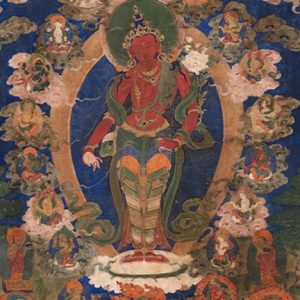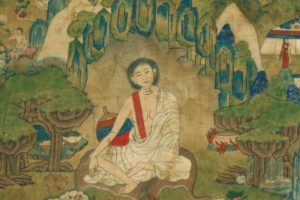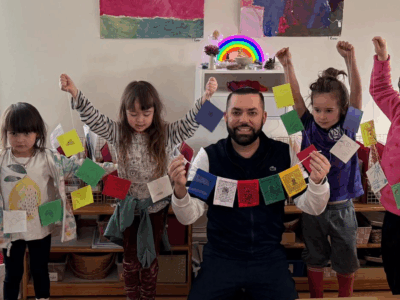Care Package: Art and Practices for Navigating Our World
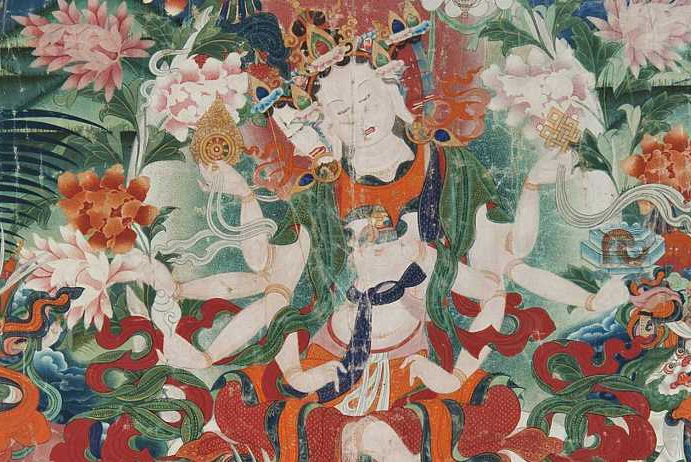
About This Resource
Details
Art and Practices for Navigating Our World
In this time of great instability, our global community is experiencing growing fear, loss, isolation, and stress. When faced with uncertainty and turmoil, Buddhists rely on traditional practices developed over two thousand years to harness the mind and help change perspectives, manage emotions, and cultivate compassion.
Inspired by the practices reflected in Buddhist visual culture, these resources may help you handle stress and foster peace of mind wherever you are.
DIY ART MAKING ACTIVITY: MINDFULNESS JAR
Mindfulness is the practice of being fully present in time and space, and being aware of our surroundings without being reactive or overwhelmed by them. You can achieve this mental state by focusing the senses and emotions on the present moment. This practice involves acceptance, which means there is no judgement of right or wrong, good or bad; when you are mindful, things simply are.
This kind of serenity might be hard to imagine, but it’s something you can experience anytime. You can even find unique ways to experience it with your family. Try creating a Mindfulness Jar. This is a simple and fun activity to do with kids or adults of any age. It can serve as an introduction to the practice of mindfulness or just be a visual metaphor for the interplay of life’s chaos and stillness.
ARTFUL INSPIRATION FOR COMPASSION: AVALOKITESHVARA
Rakta Avalokiteshvara is a bodhisattva who made a vow to remain in our realm of suffering through countless lifetimes to work for the benefit of all beings. Bodhisattvas display determination and self-sacrifice, vowing not to pass into the blissful state of nirvana until all sentient beings are free and accumulate the wisdom and merit to become buddhas themselves.
EMBRACE INSTABILITY
Buddhism encourages us to embrace the instability of life. In Spiral magazine, Professor John Dunne explores how impermanence manifests on obvious and subtle levels, and how Buddhist insight can help us navigate change. He writes, “The overall point of contemplating death and impermanence is not about pain and dissatisfaction. It’s about the tremendous opportunities offered by the inevitability of change, the novelty of each moment, and the immediacy of beauty and pleasure.”
OVERCOMING OBSTACLES
Last year, cancer survivor Sharlee Jeter and co-author Sampson Davis MD met with neuroscientist Heather Berlin at the Rubin to discuss our innate power to overcome adversity, drawing on scientific research and their own experiences. They reminded us of our shared human experience of suffering, as well as the power to control our reactions to life’s challenges—even when we feel powerless to change things.
TAKE REFUGE IN THE TIBETAN BUDDHIST SHRINE ROOM
The Tibetan Buddhist Shrine Room is a quiet space for contemplation in an immersive art setting. Experience the calm atmosphere of the Shrine Room in your home with this video.
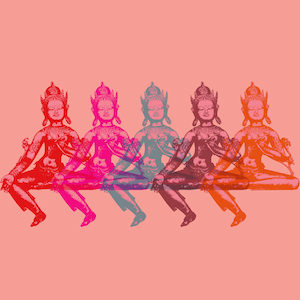
TUNE IN TO THE RUBIN DAILY OFFERING
This video series provides art, ideas, and practices inspired by our collection to help us achieve greater balance. Watch these 10-minute episodes and learn to navigate a shifting world and discover the transformative power of art.
LEARN TO HARNESS YOUR EMOTIONS
These blog posts share techniques for quieting the mind and managing anxiety for both families and adults.
- 5 Parenting Tips for Overcoming Unconscious Patterns
- Happiness Week: 6 Things to Make Your Day Happier
- Overcoming Obstacles
- How to Meditate for Beginners: The Foundation of Mindfulness
- Assess Your Inner State: 3 Calming Meditations from Mindfulness Experts
- Are We Thinking About Fear and Anxiety Wrong?
- How to Use the Body to End Stress and Tantrums
- Can Meditation Change How You Perceive Reality?
- Art as Meditation: A Lesson in Mindfulness
CONTROL THE BREATH
Listen to meditations designed to focus your mind and control your breath.
Tracy Cochran: Suffering/End of Suffering
Tracy Cochran: Hopes and Anxieties
Sharon Salzberg: Hopes and Anxieties
Khangser Rinpoche: Stress Management
Sharon Salzberg: Light and Dark
Header photo: Tara Protecting from the Eight Fears: Kham Province, Southeastern Tibet; late 19th–early 20th century; pigments on cloth with silk brocade; Rubin Museum of Art; gift of Dr. Michael Henss, Zurich; C2014.8


